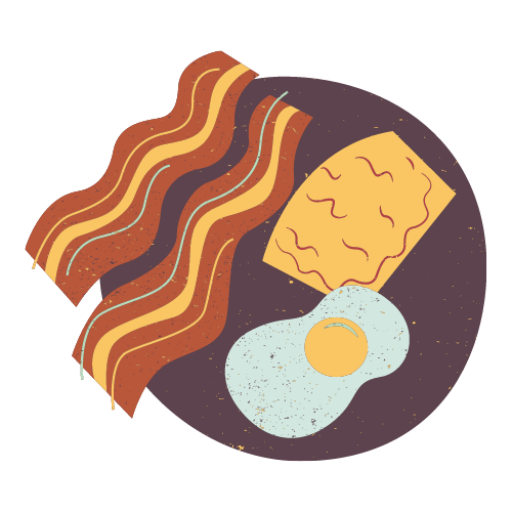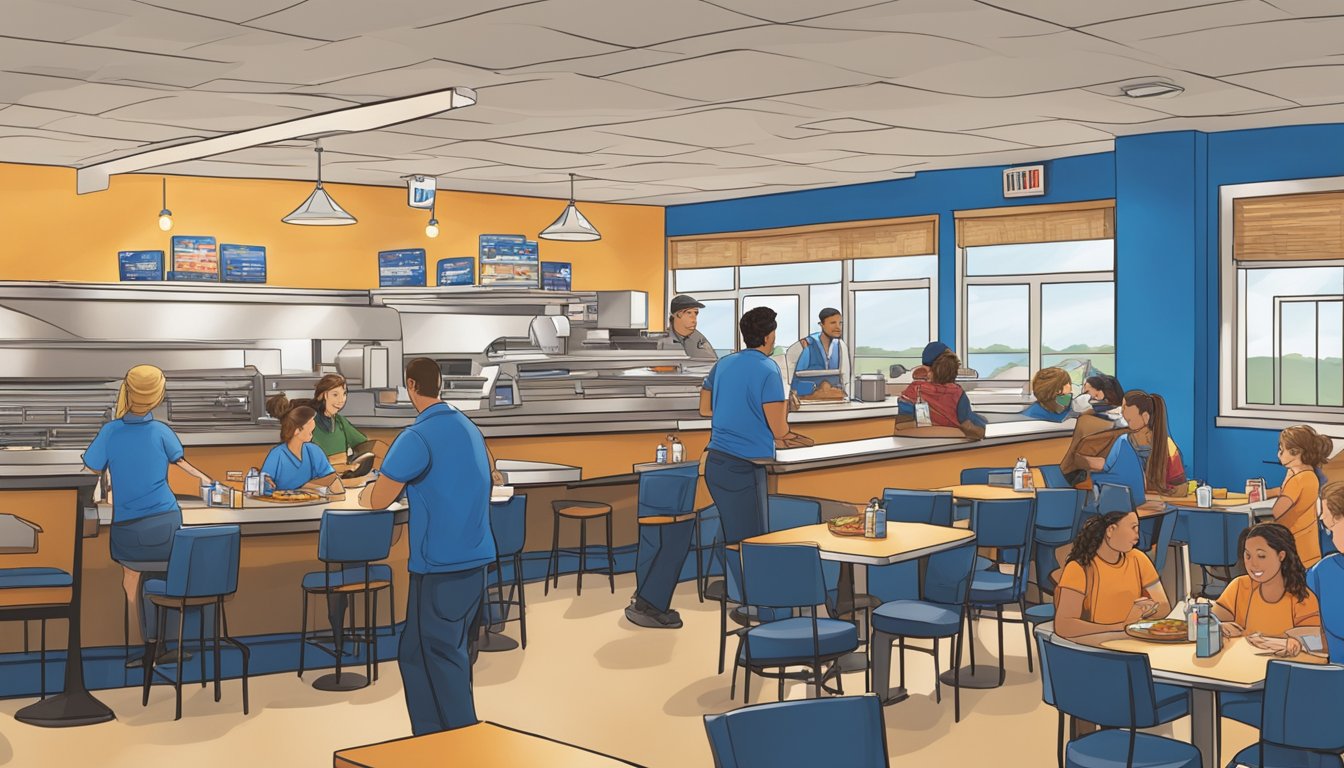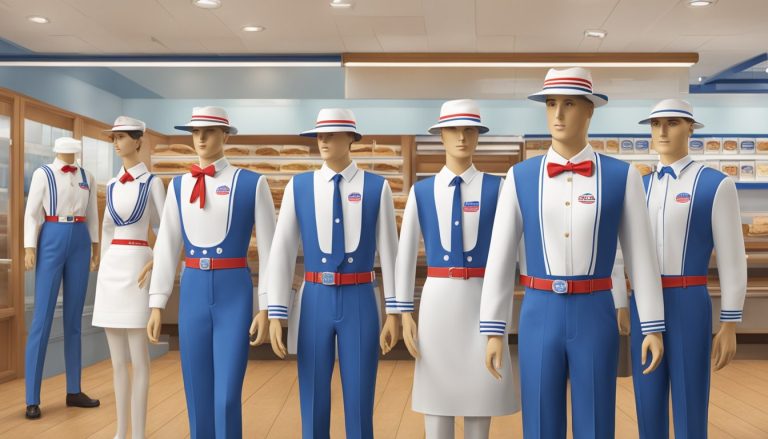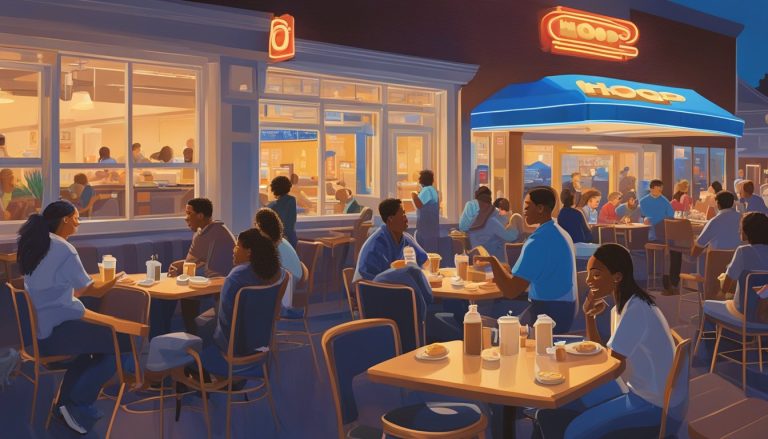IHOP, the iconic pancake house chain, has revolutionized its business model by embracing 24/7 operations at many locations. This strategic shift has significantly impacted customer satisfaction and revenue streams. Round-the-clock service allows IHOP to cater to diverse customer segments, from early morning breakfast enthusiasts to late-night diners seeking comfort food.
The implementation of 24/7 service aligns with modern consumer expectations for instant gratification and flexible dining options. IHOP’s expanded hours enable the restaurant to capture business from shift workers, travelers, and those with non-traditional schedules. This approach has broadened IHOP’s customer base and increased its competitive edge in the restaurant industry.
By offering continuous service, IHOP has transformed its restaurants into reliable food destinations at any hour. This consistency has strengthened brand loyalty and positioned IHOP as a go-to option for customers seeking familiar comfort food, regardless of the time. The 24/7 model has not only boosted sales but also optimized resource utilization, allowing IHOP to maximize its return on investment in facilities and equipment.
Evolution of IHOP’s Business Model
IHOP’s business model has undergone significant changes since its inception. The company has adapted to market trends, expanded its offerings, and embraced 24/7 service to meet customer needs.
Historical Perspectives on IHOP
IHOP, originally known as International House of Pancakes, opened its first restaurant in 1958 in Toluca Lake, California. The initial focus was on breakfast, particularly pancakes and waffles.
In the 1960s and 1970s, IHOP expanded rapidly through franchising. This growth strategy allowed the brand to spread across the United States quickly.
By the 1980s, IHOP had established itself as a leader in the breakfast segment. The company began to explore menu diversification, adding lunch and dinner options to attract customers throughout the day.
Adaptation to Market Demands
IHOP’s menu evolution reflected changing consumer preferences. In the 1990s and 2000s, the company introduced healthier options and expanded its non-breakfast items.
The acquisition of Applebee’s in 2007 marked a significant shift in IHOP’s business strategy. This move allowed IHOP to enter the casual dining segment and diversify its revenue streams.
IHOP has also embraced technology to enhance customer experience. The company has implemented digital ordering systems and explored ghost kitchens to meet the growing demand for off-premise dining.
The Emergence of 24/7 Service
IHOP’s transition to 24/7 service was a response to changing consumer lifestyles and expectations. Many locations began offering round-the-clock service in the late 1980s and early 1990s.
This move allowed IHOP to capture late-night and early-morning customers, particularly shift workers and young adults. 24/7 service became a key differentiator for IHOP in the competitive restaurant industry.
The company has continued to refine its 24/7 model, adjusting staffing and menu offerings to optimize profitability during off-peak hours. This strategy has helped IHOP maintain its position as a go-to destination for breakfast at any time of day.
24/7 Operating Model
IHOP’s round-the-clock service model has become a cornerstone of its business strategy. This approach caters to diverse customer needs and maximizes revenue opportunities across all hours of the day.
Rationale Behind Continuous Operations
IHOP’s decision to operate 24/7 stems from recognizing the changing dining habits of consumers. Late-night diners, early risers, and shift workers all find a welcoming space at IHOP. This model allows the restaurant to tap into previously underserved time slots.
The strategy also optimizes kitchen and staff utilization. By keeping operations running continuously, IHOP reduces startup and shutdown costs associated with daily openings and closings.
Additionally, the 24/7 model positions IHOP as a reliable dining option, enhancing brand recognition and customer loyalty. This constant availability has become a key differentiator in the competitive restaurant industry.
Impact on Traffic and Same-Store Sales
The 24/7 operating model has significantly influenced IHOP’s traffic patterns and same-store sales. By extending operating hours, IHOP has created new revenue streams during traditionally slow periods.
Late-night and early morning sales have shown notable growth. These non-peak hours now contribute a substantial portion to overall revenue.
Same-store sales have benefited from increased customer visits across all dayparts. The extended hours attract a wider customer base, including:
- Night owls seeking late dinners
- Early birds looking for pre-dawn breakfasts
- Travelers needing a reliable pit stop
This diverse customer mix has helped smooth out sales fluctuations throughout the day.
Maintaining Customer Experience Around the Clock
Ensuring consistent quality and service across all hours presents unique challenges. IHOP addresses these through:
- Specialized training for overnight staff
- Tailored menus for different dayparts
- Regular equipment maintenance during slower periods
The company emphasizes maintaining cleanliness and food quality standards regardless of the hour. This commitment helps preserve the brand’s reputation for reliability.
IHOP also adapts its staffing levels to match demand fluctuations. This ensures efficient service during busy periods while controlling labor costs during slower times.
Technology plays a crucial role in maintaining service standards. Automated systems help manage inventory and streamline order processing, supporting consistent operations around the clock.
Strategies for Customer Engagement

IHOP has implemented several key strategies to enhance customer engagement and drive growth. These approaches leverage technology, loyalty programs, and expanded communication channels to meet evolving consumer expectations.
Implementing a Loyalty Program
IHOP’s loyalty program rewards frequent diners with exclusive perks and discounts. Members earn points on purchases, which can be redeemed for free menu items or special offers. The program tracks customer preferences, allowing IHOP to send personalized promotions and birthday rewards.
Digital integration enables seamless point tracking through a mobile app. This convenience encourages repeat visits and increases customer lifetime value.
The loyalty program also provides valuable data on dining habits and popular menu items. IHOP uses these insights to refine offerings and tailor marketing campaigns to specific customer segments.
Technological Advancements for Improved Service
IHOP has embraced technology to streamline operations and enhance the dining experience. Self-service kiosks in some locations allow customers to place orders and pay without waiting for a server. This option reduces wait times during peak hours.
Mobile ordering capabilities let customers skip lines by ordering ahead. The IHOP app provides estimated wait times and allows diners to join virtual queues remotely.
In-restaurant tablets at tables enable guests to place additional orders, request refills, or pay their bill without flagging down staff. This technology improves service efficiency and gives customers more control over their dining experience.
Expanding Communication Channels
IHOP has diversified its communication channels to stay connected with customers 24/7. Social media platforms serve as hubs for promotions, customer service, and brand engagement. The company responds promptly to inquiries and feedback across Twitter, Facebook, and Instagram.
A dedicated customer support team handles phone and email communications around the clock. This ensures timely resolution of issues and questions, even outside normal business hours.
IHOP’s website features a comprehensive FAQ section and live chat support. These resources provide instant answers to common queries, reducing the load on phone support and improving customer satisfaction.
Adapting to New Consumer Behaviors
IHOP has transformed its operations to meet evolving customer needs and preferences. These changes encompass expanded service models, heightened expectations, and innovative brand strategies.
Shift to Delivery and Takeout Services
IHOP rapidly expanded its delivery and takeout options in response to changing consumer habits. The restaurant chain partnered with major delivery platforms to reach customers at home. They optimized their menu for travel, ensuring pancakes and other favorites arrived fresh.
IHOP also revamped their app and website for easy online ordering. Curbside pickup became a standard offering at most locations. These moves allowed IHOP to maintain sales during periods of reduced dine-in traffic.
The company invested in packaging improvements to maintain food quality during transport. This focus on off-premise dining helped IHOP tap into new revenue streams and retain customer loyalty.
Redefining Customer Expectations and Satisfaction
IHOP recognized that 24/7 availability reshaped customer expectations. They enhanced their digital presence to provide round-the-clock information and support. The chain implemented a chatbot on their website to answer common questions instantly.
Social media teams began monitoring platforms 24/7 to address customer feedback promptly. IHOP also extended its customer service hours to match its all-day dining concept.
The restaurant introduced new training programs to ensure staff could meet heightened customer expectations. These initiatives focused on speed, accuracy, and personalized service. IHOP’s commitment to satisfaction across all touchpoints strengthened customer relationships.
Implementing Virtual Brands
IHOP embraced the virtual brand trend to diversify its offerings. They launched “Thrilled Cheese” and “Super Mega Dilla,” delivery-only concepts operating from existing IHOP kitchens. These brands allowed IHOP to experiment with new menu items and target different customer segments.
Virtual brands helped IHOP maximize kitchen capacity during off-peak hours. They also provided an avenue to test market demand for potential new products or spin-off concepts.
IHOP leveraged its existing infrastructure and supply chain to support these virtual brands efficiently. This strategy enabled the company to adapt to changing consumer preferences while minimizing additional costs.
Franchisee Relationships and Performance
IHOP’s success hinges on strong partnerships with its franchisees. The company provides extensive support to help franchisees adapt to operational changes and achieve financial success.
Supporting Franchisees through Change
IHOP assists franchisees in implementing 24/7 service through comprehensive training programs and operational guidance. The company offers hands-on support during the transition, helping franchisees optimize staffing schedules and manage inventory for round-the-clock operations.
IHOP also provides marketing assistance to promote the new hours locally. This includes customized advertising materials and social media strategies to attract late-night customers.
To ease the financial burden, IHOP may offer temporary royalty relief or subsidies for franchisees during the initial adjustment period.
Ensuring Franchisee Success with AUV and Positive Comps
IHOP closely monitors franchisee performance through key metrics like Average Unit Volume (AUV) and comparable store sales (comps). The company sets target AUV benchmarks and works with franchisees to develop strategies for reaching these goals.
Positive comps are a priority, with IHOP providing data-driven insights on menu optimization and pricing strategies. The company shares best practices from top-performing locations to help all franchisees improve sales.
IHOP offers additional support for underperforming units, including:
- On-site consultations
- Customized action plans
- Targeted marketing initiatives
By fostering franchisee success, IHOP strengthens its brand and expands its market presence.
Economic Factors Influencing Operations

IHOP’s 24/7 service model faces unique economic challenges. Inflation and operating costs impact profitability, while capacity restrictions and market fluctuations affect customer demand and staffing needs.
Contending with Inflation and Operating Costs
Inflation directly impacts IHOP’s bottom line by increasing food and supply costs. The restaurant chain must carefully balance pricing strategies to maintain profit margins without deterring customers. Labor expenses also rise with inflation, particularly for overnight shifts.
Energy costs for round-the-clock operations are significant. IHOP invests in energy-efficient equipment and lighting to minimize utility bills. The company also negotiates bulk purchasing agreements with suppliers to secure better prices on key ingredients.
Maintenance costs increase with longer operating hours. Equipment undergoes more wear and tear, requiring more frequent repairs and replacements. IHOP implements preventative maintenance programs to reduce unexpected breakdowns and extend equipment lifespans.
Dealing with Capacity Restrictions and Market Fluctuations
IHOP’s 24/7 model requires flexible staffing to match customer demand. The restaurant faces challenges in scheduling enough workers for busy periods while avoiding overstaffing during slow hours. Management uses data analytics to predict customer traffic and optimize staff schedules.
Economic downturns can reduce overall dining out frequency. IHOP counters this by offering value menu items and promotional deals to attract budget-conscious customers. The chain also emphasizes its late-night and early morning offerings to capture shift workers and other non-traditional diners.
Seasonal fluctuations affect IHOP’s business. Summer travel seasons may boost business in some locations, while winter weather can deter customers in others. The company adjusts marketing and promotions to capitalize on peak periods and mitigate slow seasons.
Extending the IHOP Brand

IHOP has implemented several strategies to broaden its market reach and appeal to diverse customer segments. These initiatives aim to capitalize on the brand’s strengths while exploring new opportunities for growth.
Launch of Flip’d by IHOP and Fast-Casual Spinoff
IHOP introduced Flip’d, a fast-casual spinoff concept designed to cater to on-the-go customers. This innovative format offers a streamlined menu featuring IHOP favorites in a more convenient setting.
Flip’d locations focus on quick service and takeout options, addressing the growing demand for fast, quality meals. The concept aims to attract younger demographics and urban dwellers who prioritize convenience.
To encourage franchisee adoption, IHOP offered $150,000 in startup funding for the first 10 operators to open a Flip’d location. This incentive demonstrates IHOP’s commitment to expanding its brand presence in the fast-casual market.
Assessing Innovative Menu Items
IHOP continuously evaluates and introduces new menu items to keep its offerings fresh and appealing. The chain has experimented with unique creations like the Thrilled Cheese sandwich and the Super Mega Dilla.
These innovative dishes aim to:
- Attract new customers
- Increase average check sizes
- Generate buzz and social media attention
IHOP’s menu innovation strategy focuses on maintaining its breakfast expertise while expanding into lunch and dinner options. This approach helps the brand compete effectively in various dayparts and appeal to a wider range of dining occasions.
Leveraging IHOP’s Competitive Advantage
IHOP’s competitive advantage lies in its strong brand recognition and leadership in the family dining segment. The chain holds a 30% market share and boasts the highest brand awareness in its category.
Key factors contributing to IHOP’s competitive edge include:
- World-famous pancakes and signature flavored syrups
- “Never empty” coffee pot policy
- Largest marketing budget in the family dining segment
IHOP leverages these strengths to maintain customer loyalty and attract new diners. The brand’s positioning around “all things breakfast, any time of the day” resonates with consumers seeking comfort food and familiar flavors.
Future Outlook and Continuous Improvement

IHOP’s 24/7 service model faces both opportunities and challenges in the coming years. The company aims to refine its round-the-clock offerings while leveraging new technologies to meet evolving customer expectations.
Forecasting Customer Needs and Service Adaptations
IHOP recognizes the importance of anticipating shifts in consumer preferences. The company plans to expand its menu options beyond traditional breakfast fare to cater to health-conscious diners and those seeking variety at different times of day. IHOP will likely introduce more customizable meals and plant-based alternatives to appeal to a broader customer base.
To maintain its competitive edge, IHOP may consider implementing a loyalty program or enhancing its existing one. This could include personalized offers and rewards based on individual dining habits and preferences, encouraging repeat visits across all hours of operation.
Investing in 24/7 Customer Support Technologies
IHOP is poised to embrace cutting-edge technologies to streamline its 24/7 service. The integration of AI-powered chatbots on its website and mobile app could provide instant customer support, handling reservations, answering frequently asked questions, and addressing basic concerns.
The company may explore implementing a flybuy system to enhance the takeout and delivery experience. This technology would allow customers to order ahead and have their meals ready upon arrival, reducing wait times and improving overall satisfaction.
IHOP could also invest in advanced kitchen management systems to boost productivity during peak hours and maintain consistent quality throughout the day and night. These systems would optimize food preparation and ensure efficient service, even during traditionally slower periods.




